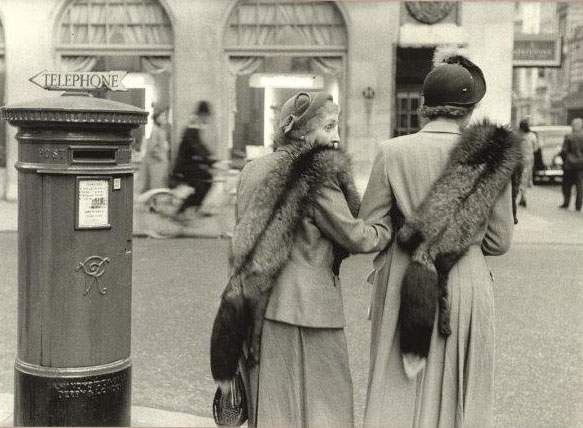An exhibition entirely dedicated to an... exhibition: this is the review that the Diocesan Museum "Carlo Maria Martini,“ now increasingly ”launched" in the world of photography, dedicates to the first exhibition of the world’s most famous photo agency, Magnum. Magnum’s first is the title of the event curated by Andrea Holzherr (Global Exhibitions Manager of Magnum Photos), which, from May 8 to October 6, 2019, through eighty-three vintage black-and-white prints by eight great masters of twentieth-century photography (Henri Cartier-Bresson, Robert Capa, Werner Bischof, Inge Morath, Erich Lessing, Marc Riboud, Jean Marquis, Ernst Haas), Magnum’s first exhibition, held between 1955 and 1956 in five Austrian cities (the title then was Gesicht der Zeit, or “the face of time”). The constituent corpus of that exhibition was found in 2006, still locked in its crates, in a cellar in Innsbruck, Austria.
“What we found in the crates,” says curator Andrea Holzherr, “was, to say the least, astonishing: a series of old wooden panels on which very dirty photographs were mounted. Therefore, my first contact with the old exhibit resembled more the discovery of a mummy than the discovery of a treasure. The materials were in very bad condition: the photos were covered with dust, dirt and mold, and they even smelled stale!” And the exhibition, the curator continues, “is a puzzle, a mystery, and remains the first ever exhibition of Magnum photos known to exist! Its existence is proof that, from the very beginning, Magnum was different from other photo agencies. From its beginnings, with its program of exhibitions and events, Magnum defended both the value of the photo as a document.”
The uniqueness of the find, in addition to bringing the heritage of original images fortunately returned to light, also offers the public a chance to review the exhibition exactly as it was intended. In two wooden crates were, in fact, the eighty-three black-and-white photos mounted on colored wooden panels, along with the presentation text, name tags, the original poster and typewritten instructions on the layout. The exhibition itinerary, which features eight photojournalistic reports, presented by an introductory section, begins with Henri Cartier-Bresson’s eighteen black-and-white photographs of Mahatma Gandhi’s last days and funeral, which were part of the report published by Life magazine in February 1948. It then continues with a Robert Capa deliberately moving away from the kind of war reportage that had made him famous to document, with three images, a group of commoners dancing at a Basque festival, in Biarritz, southern France in 1951. These photographs, published posthumously, were intended to highlight the return to peace in a region that had become synonymous with barbarism by the time of the Spanish Civil War.
The exhibition continues with Ernst Haas’s set photos, taken on the set of the 1955 Hollywood blockbuster The Queen of the Pyramids, staged in the stone quarries of Aswan, where heat, sandstorms and Ramadan made the undertaking a veritable torture for the four thousand extras, almost all Muslim. These are followed by Werner Bischof’s seven photographs, collected during his trip around the world in the early 1950s: images such as the one of the child playing the flute in Peru, or the one depicting the Shinto priest in the temple courtyard in Japan, which are full of delicate nuances, valuable both for their composition and their black and white tones. Then it is the turn of the only woman in the group, Inge Morath, who offers a series of ten photographs, taken in London, for an article published in Holiday magazine in1953, including a portrait of Lady Nash, her most famous shot.
Another major contribution of photojournalism is that of Jean Marquis, an author little known outside the borders of France, probably a member of Magnum until 1957: his photographs were taken during a trip he took with his wife to Hungary in May 1954, and were published in November of that year in the New York Times Magazine. Erich Lessing documented the Nazi occupation of Vienna, his city, from which serenity and even, to a certain extent, good humor seep out in such landmarks of the Austrian capital as the Belvedere Garden, the Prater, and the Rathauspark. Finally, ideally closing the exhibition are Marc Riboud’s youthful works, which date from 1951, before he joined Magnum, and document life in Dalmatian villages between Vrlika, Split and Dubrovnik. Emblematic is the final photo in this series, namely a large portrait of Yugoslav President Tito as he is returned to his seat at the end of a congress.
Magnum’s first. Magnum’s first exhibition can be visited during the opening hours of the Milan Diocesan Museum: Tuesday through Sunday from 10 a.m. to 6 p.m. (last admission at 5:30 p.m.). Tickets: full 8 euros, concessions and groups 6 euros, schools and oratories 4 euros. For all info visit the museum’s website.
Pictured: Inge Morath, New Bond Street, London, Great-Britain, 1953; © Inge Morath/Magnum Photos
 |
| Great photography in Milan, the Diocesan Museum reconstructs the first Magnum exhibition, from Capa to Cartier-Bresson |
Warning: the translation into English of the original Italian article was created using automatic tools. We undertake to review all articles, but we do not guarantee the total absence of inaccuracies in the translation due to the program. You can find the original by clicking on the ITA button. If you find any mistake,please contact us.